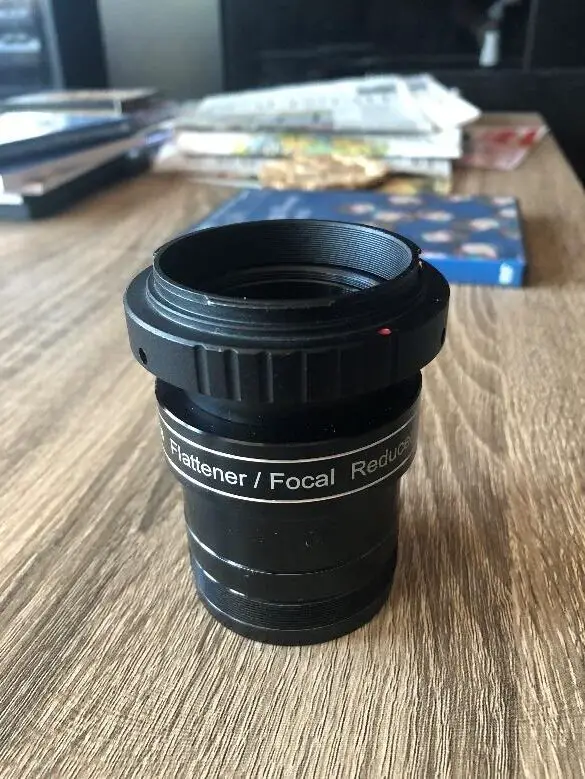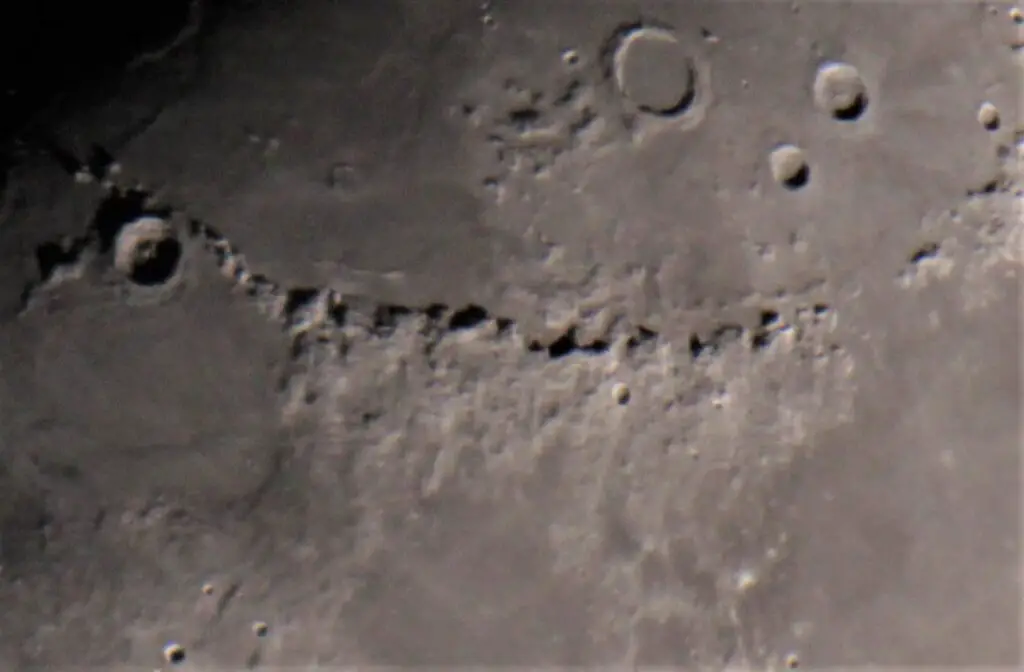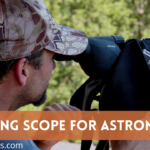With telescopes in general, and astrophotography in particular, there is a plethora of accessories to spend your money on. It can be confusing to figure out which items you need most.
In this article, we’ll look at a class of accessories called corrective optics, which includes:
- Focal Reducers
- Focal Extenders
- Coma Correctors
- Field Flatteners
There are some others, but this is what we will focus on.
Telescope optics are not perfect.
Every optical design has certain inherent limitations or flaws which should be considered before making your purchase. Corrective optics are intended to address these imperfections.
Field Flatteners
Refracting telescopes are affected by an aberration called field curvature.
Field curvature causes the inner and outer portions of the image produced by the telescope to come to focus at different distances, and is more pronounced in refractors with short focal lengths.
For visual use, field curvature is generally not something you need to worry about.
I have owned three refractors, from f/9 down to f/5, and field curvature never bothered me in the slightest.
For astrophotography, however, it is a different story.
Short-focus refractors are popular for the wide-field images they produce but all of them suffer from field curvature. If you are shooting through a short refractor at prime focus, stars will be elongated radially from the centre of your images, creating the impression that you just engaged warp drive on your starship.
You can crop these long stars out but at the cost of a large portion of your image frame.

The effects of field curvature are noticeable in the image of NGC 7000. With correct spacing applied, a field flattener will fix those streaky stars at the edge.
The solution is a field flattener.
This corrective lens inserts between your telescope and camera, effectively compensating for the field curvature and returning your stars to points rather than streaks.
As a general rule, if you plan on shooting deep-sky images with a refractor below f/7 you will need a flattener.
Here are a few things you should know before shopping for a field flattener:
- Flatteners are designed to work with specific types or models of telescopes. Check compatibility before you place an order. You might also need a special adapter to attach the lens to your telescope and camera.
- Flatteners require a certain amount of back focus. This is the amount of space between the flattener and the camera body.
This spacing is often critical down to the millimetre, and the flattener will not perform properly if the spacing is not accurate.
You might also require extension tubes just to reach focus when the flattener is installed. This was a bit of a shock to me the first time I used mine; I had to pull the flattener part way out of the focus just to even reach focus. Then the hunt for the proper extensions was on, and continues to this day!
Reducers
A focal reducer is a corrective lens which shortens the effective focal length (EFL) of a telescope.
There are a few reasons you might want to do this:
- A shorter EFL provides a wider field of view, allowing you to frame larger targets.
- Reducing the EFL also reduces the focal ratio, giving you brighter images with the same exposure time.
Unlike field flatteners, focal reducers are useful for visual observers as well as astrophotographers. This is especially true for long-focus compound telescopes like SCTs, where a shorter EFL is desirable for viewing deep-sky objects such as open clusters and bright nebulae.
Like field flatteners, focal reducers require a specific amount of back spacing to work properly, so check the specifications of both the reducer and your telescope to ensure you will have enough back-focus to use the reducer.
Focal reducers come in a wide range of prices, from inexpensive lenses which screw onto your eyepiece barrel, to the Hyperstar series which costs as much as a telescope.
Reducer/Flatteners

These lenses combine the characteristics of reducers and flatteners, essentially providing the best of both worlds in a single accessory.
It’s what I use with my imaging setup, and is generally recommended for fast refractors. For visual use, a simple reducer would do the job.
Coma Correctors
Coma is an optical aberration in Newtonian reflectors, most noticeable at focal ratios below f/6.
Both visually and photographically, it causes stars in the outer portion of the field to sprout elongated halos, sort of like comets (hence the name).
Visually, it is most obvious when using a low-cost, wide-field eyepiece with your reflector; premium wide-field eyepieces like Tele Vue are corrected for coma and remain sharp almost right to the edge.
Owners of large, “fast” Dobsonian reflectors with focal ratios at f/5 and below will usually invest in a coma corrector to fix this. The most popular, and expensive, type of coma corrector is the Paracorr, but there are many others.
Like other corrective lenses, spacing is crucial for their operation. The Paracorr can be adjusted to provide the correct spacing but cheaper models may need spacer rings.
I have been using an f/4.9 Dob for a few years now and I’ve never felt compelled to buy a coma corrector. It comes down to how fussy you are about the outer portion of your field of view, and also what sort of eyepieces you’re using.
Barlows, Powermates, and Focal Extenders
Barlow lenses are popular accessories among both visual observers and planetary imagers.
In essence, they are the opposite of focal reducers, increasing the effective focal length of your telescope and providing higher magnification with any given eyepiece.
Barlows are rated by how much extra magnification they produce, with 2x and 3x being most common.

Barlow lenses have additional effects to increasing magnification: they will increase your telescope’s back focus as well as the eye relief of your eyepiece.
This extra back focus can be useful, for instance when connecting your camera to a Newtonian reflector. Reflectors often lack the back focus required by DSLR cameras and a barlow can fix this problem.
The design of barlow lenses also results in an exit pupil which is further back from the eye lens (increased eye relief).
If your eye relief was short to begin with, this is a plus, as the eyepiece will be more comfortable to use. However, if your eyepiece already had long eye relief it is possible the barlow will give you too much, resulting in difficult eye placement and subsequent “blackout” effects.
Note that cheap telescopes sometimes include 5x barlow lenses in order to make outrageous magnification claims. Such devices are generally useless and should be avoided.

This is where Powermates come in to play.
A more expensive alternative to barlows, Powermates offer the same image amplification without affecting eye relief or back focus.
Likewise, devices called focal extenders are usually marketed as off-brand Powermates but you should check the specifications before purchasing, as these naming conventions are not regulated and specific designs may differ between brands.





